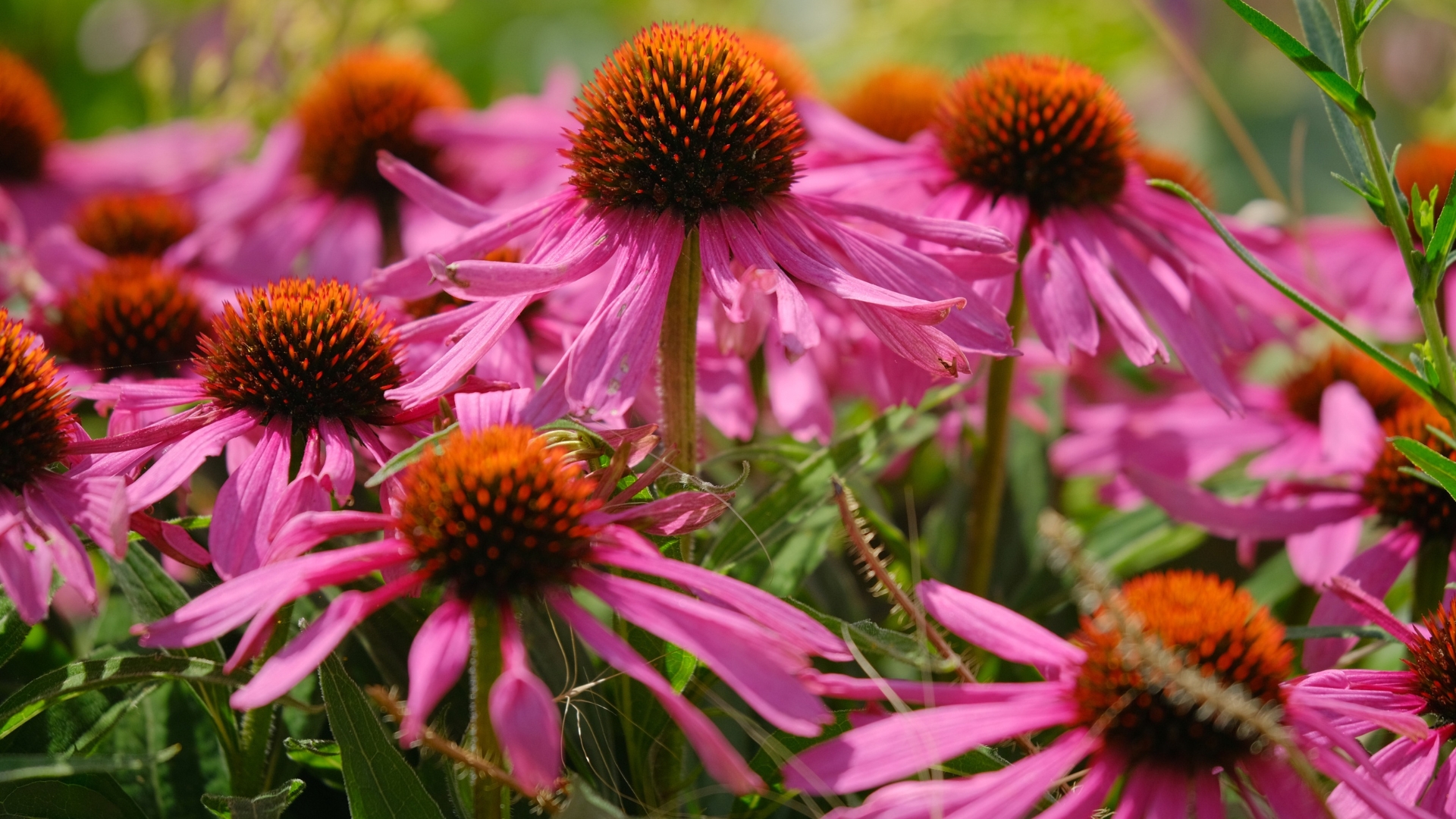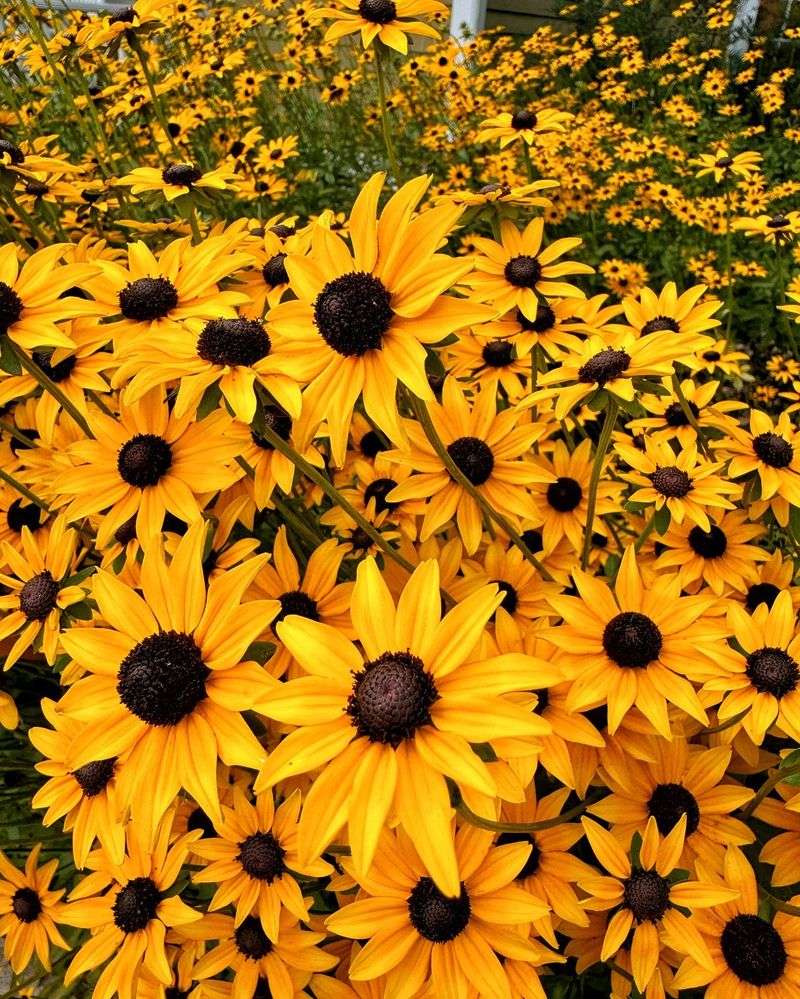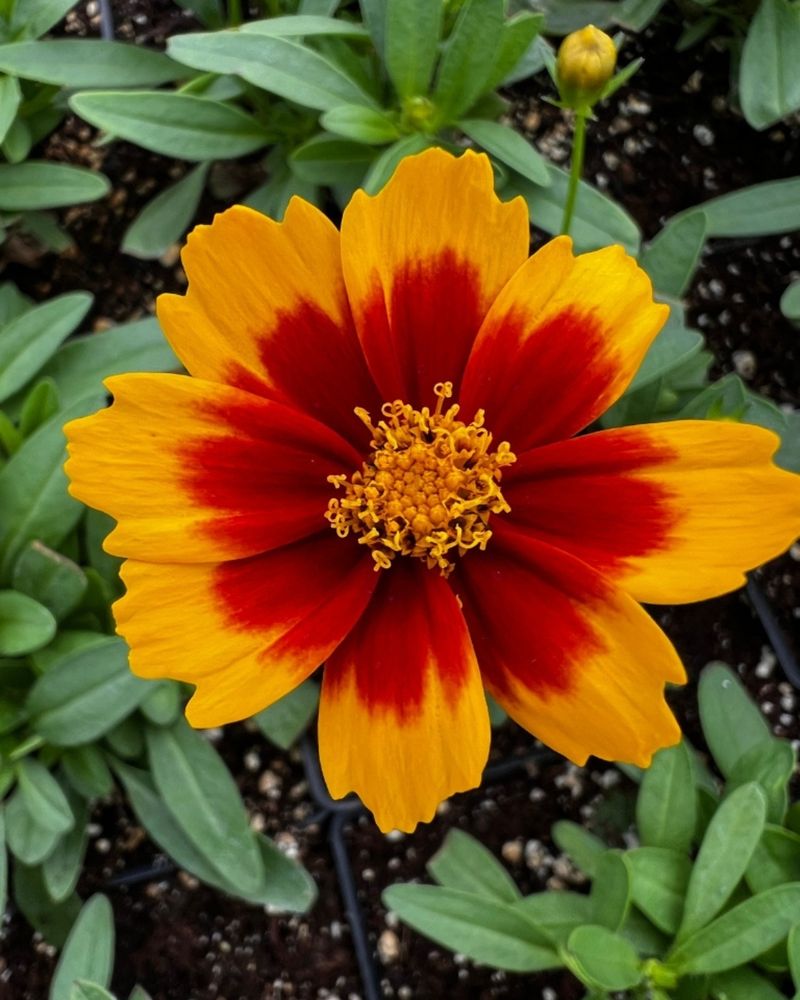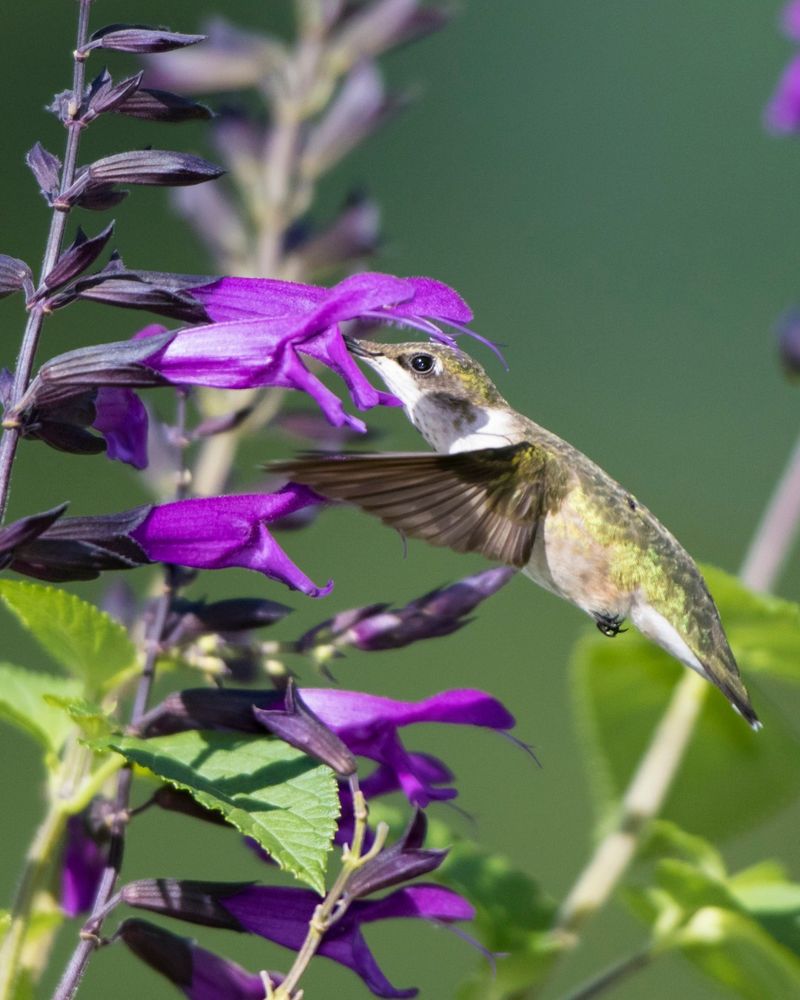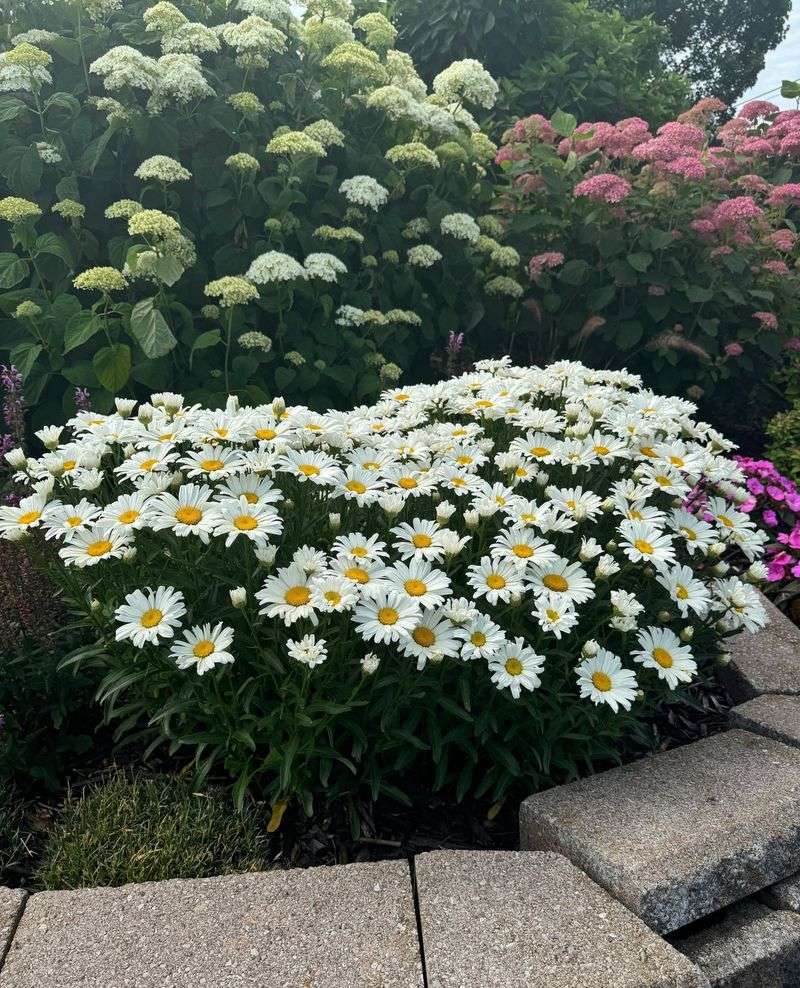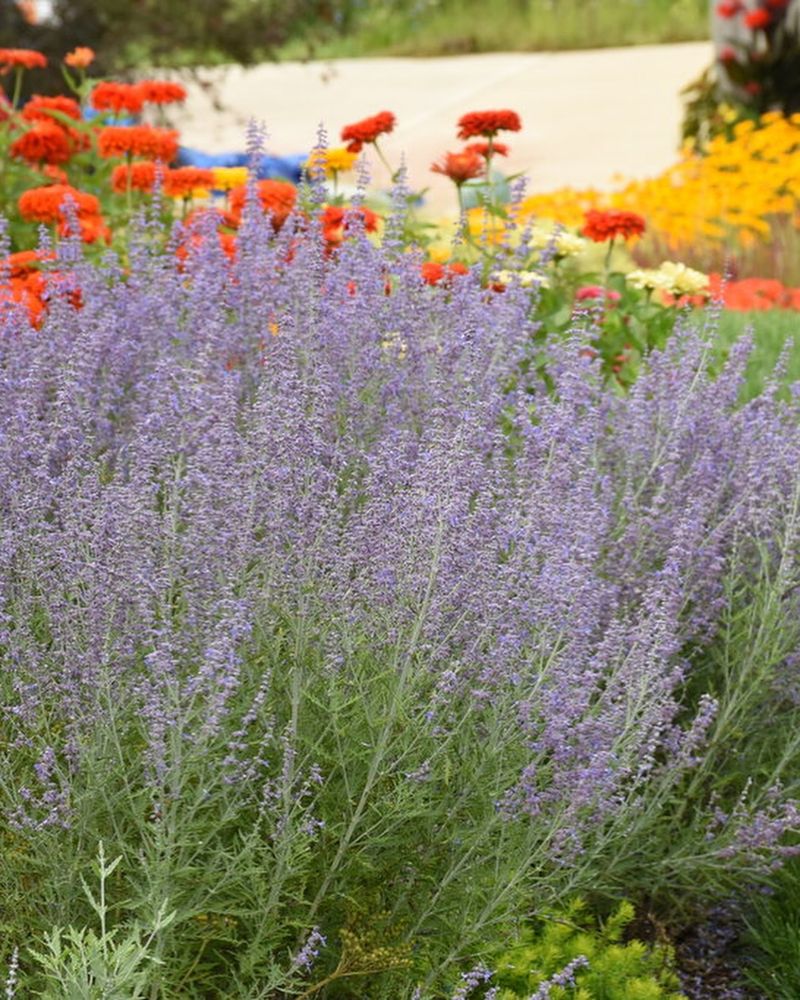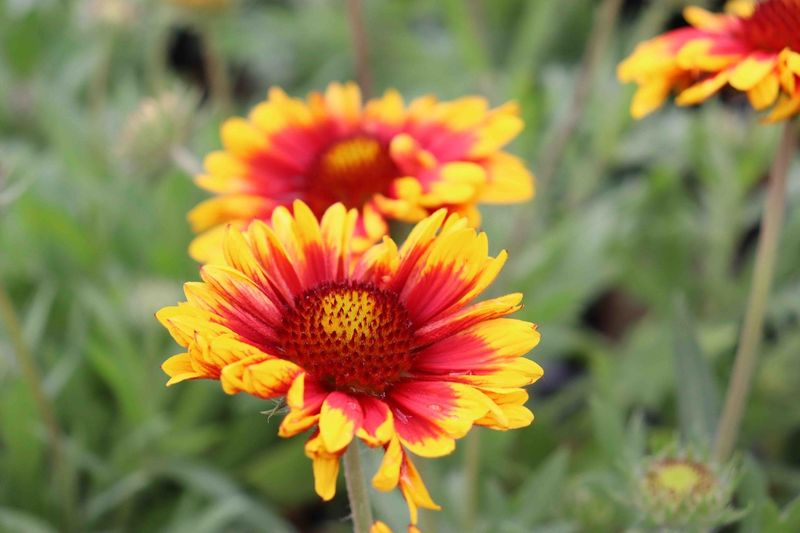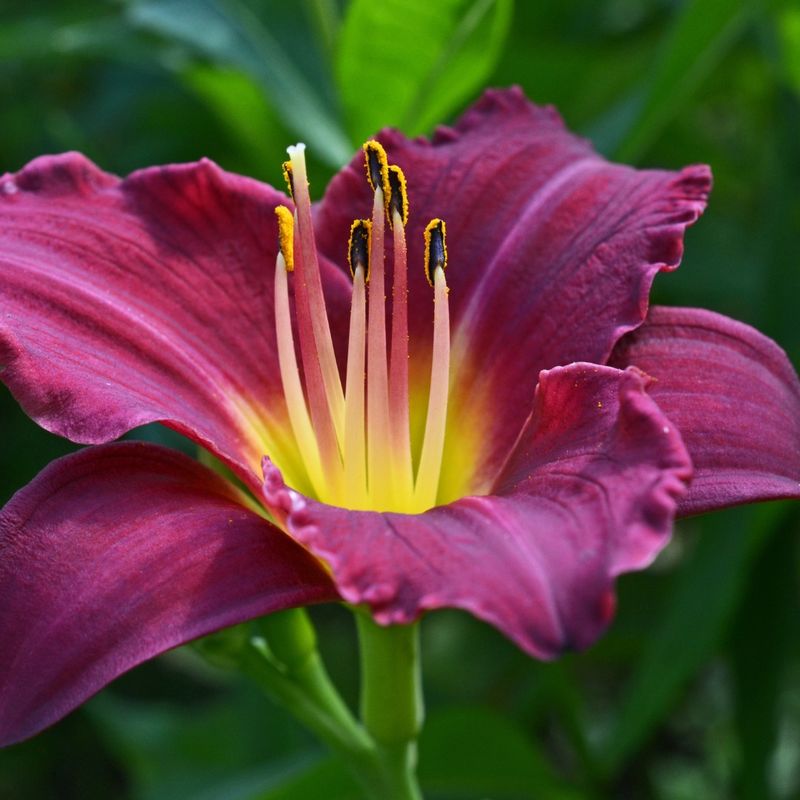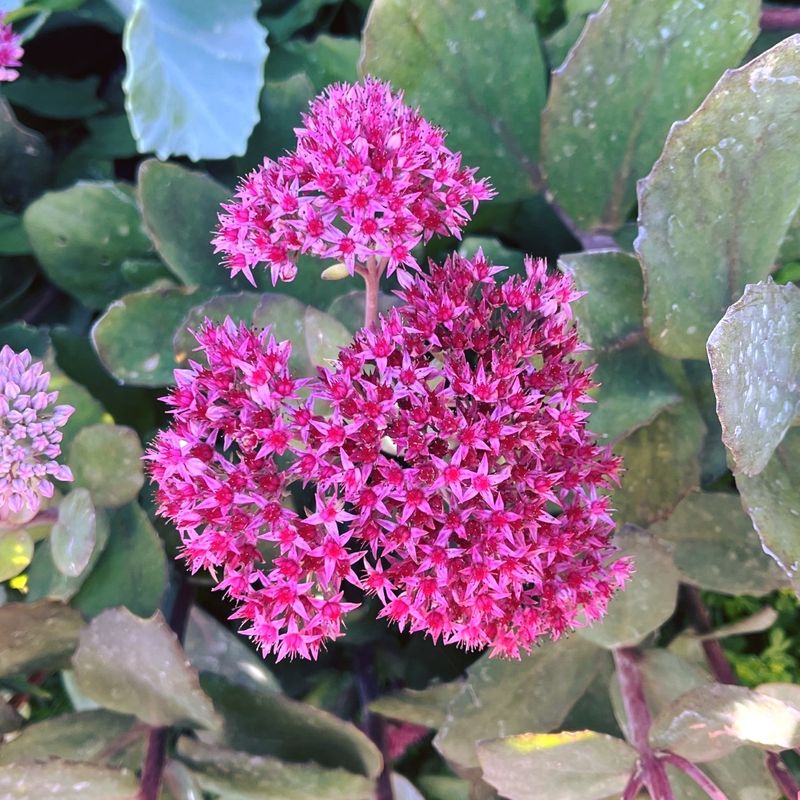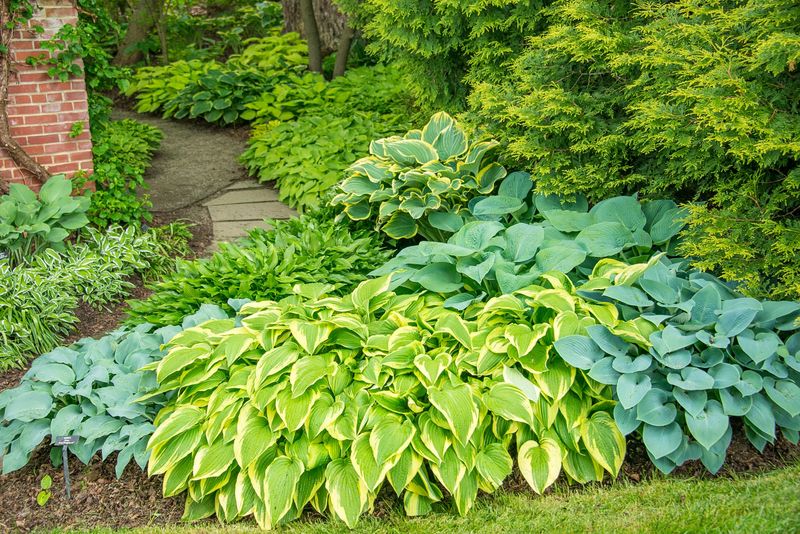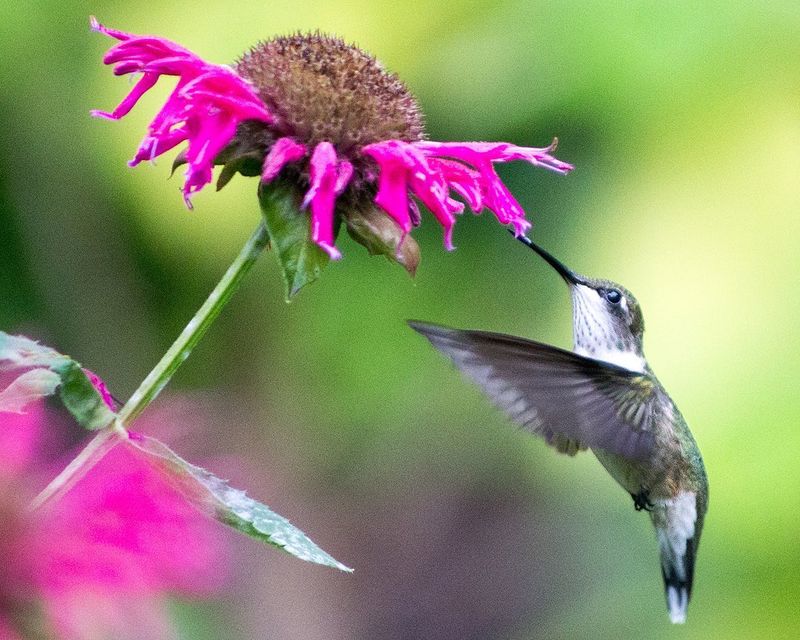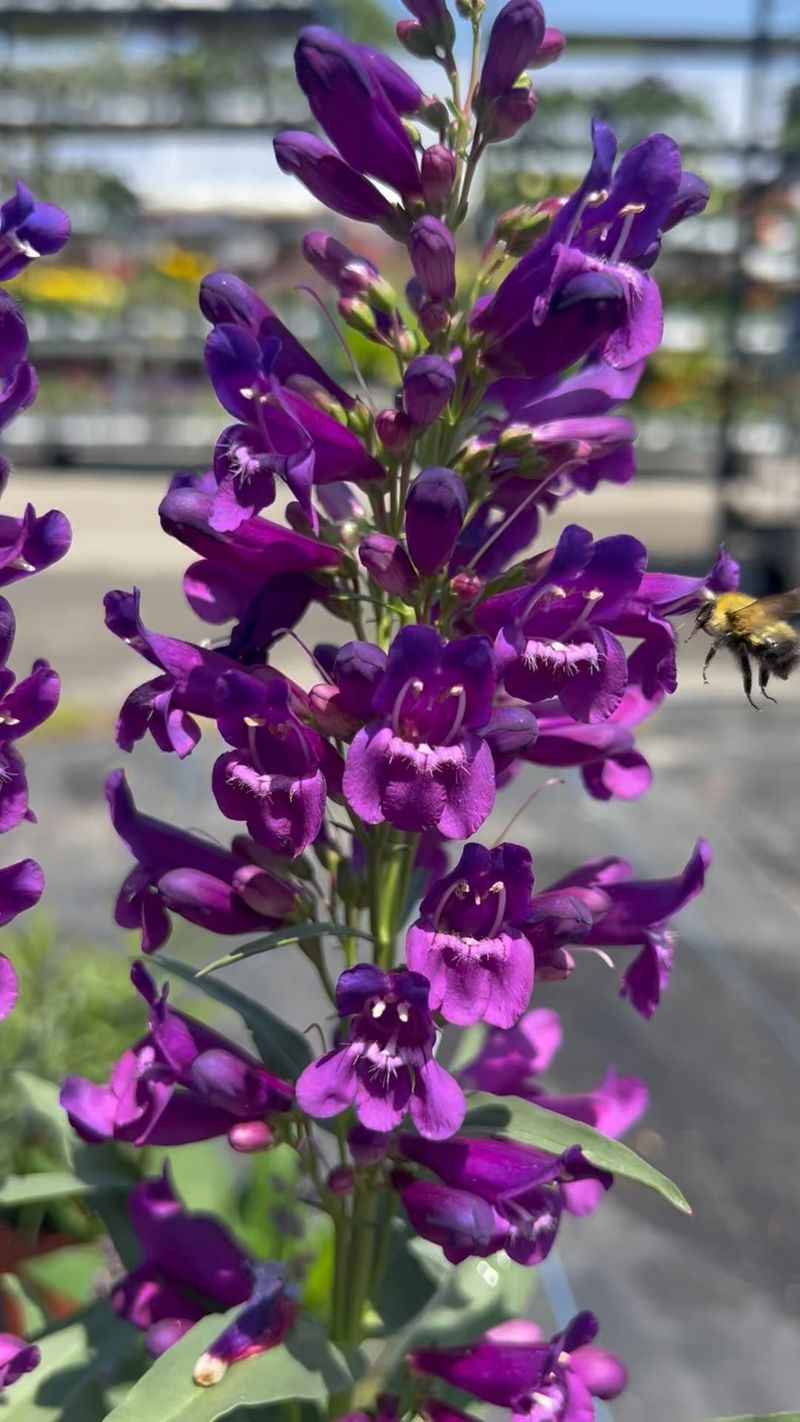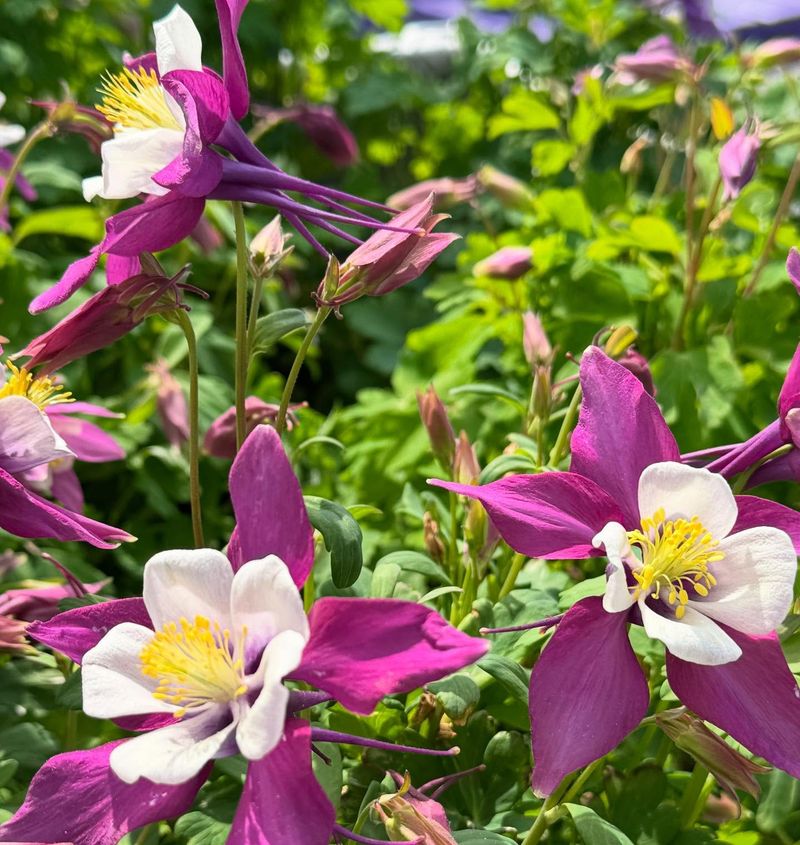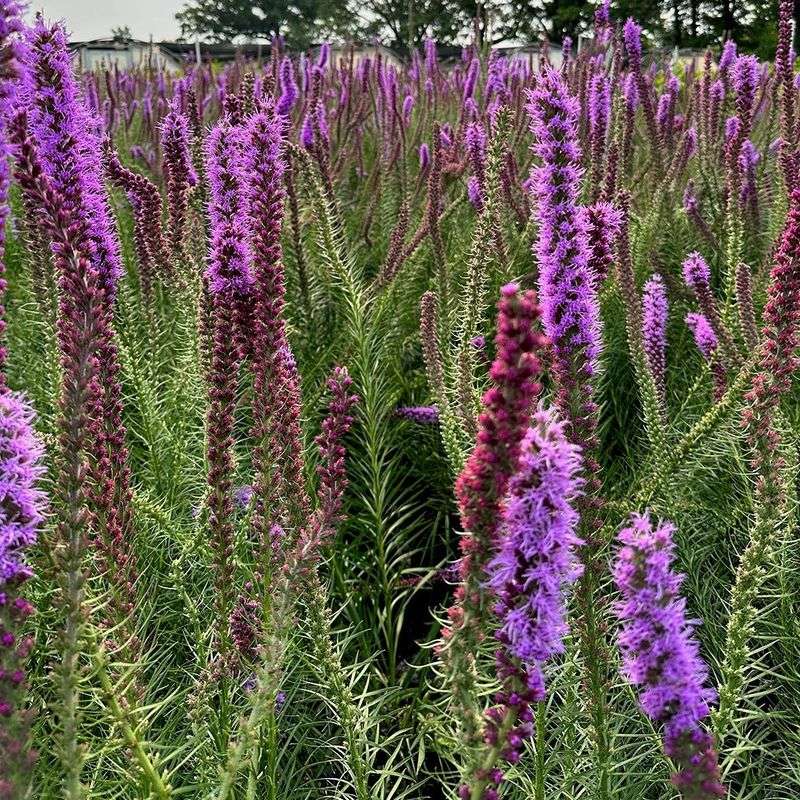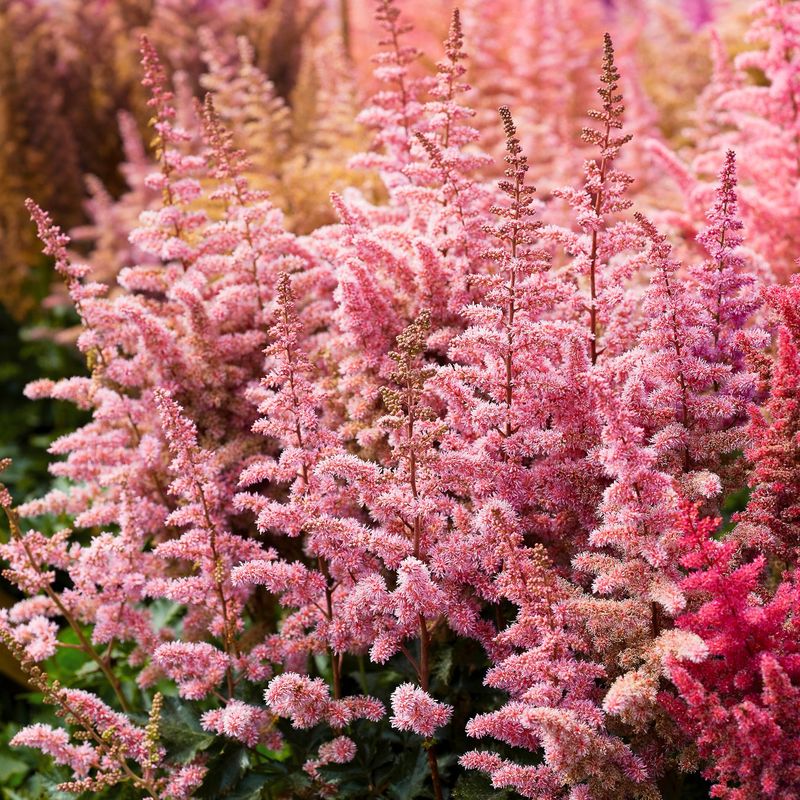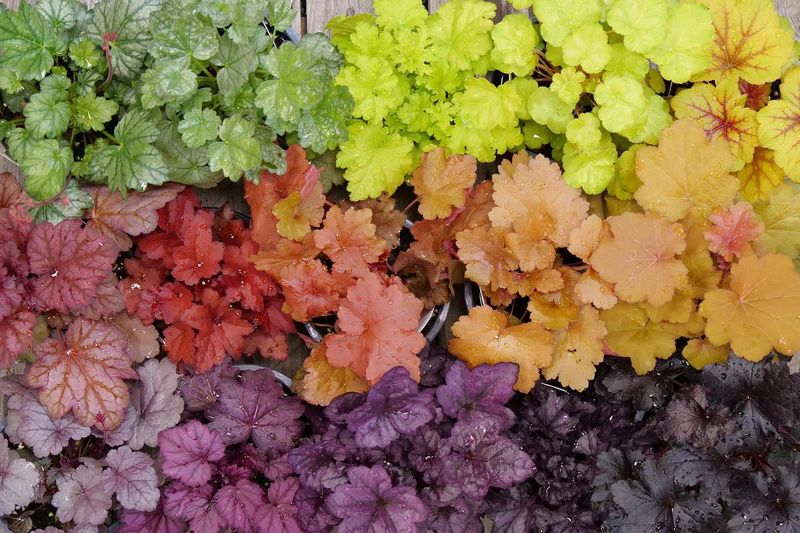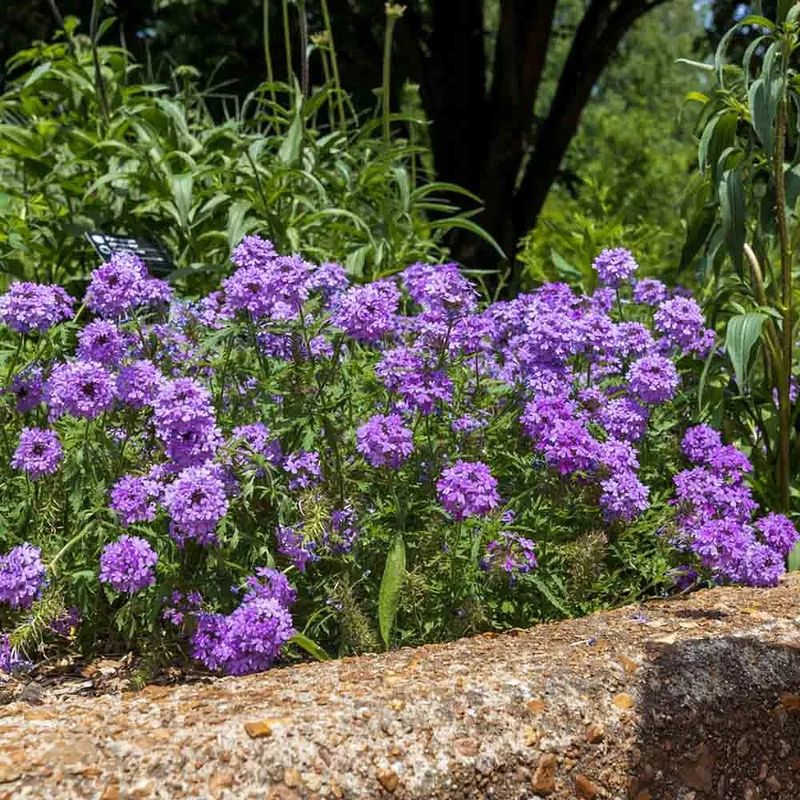Transforming your yard into a vibrant, living canvas is easier than you might think. With the right selection of plants, you can create a space that’s not only beautiful but also beneficial for local wildlife and your well-being. From colorful blooms to hardy perennials, these 19 must-have plants will elevate your garden from ordinary to extraordinary.
1. Coneflowers: Nature’s Medicine Cabinet
Standing tall with their distinctive cone-shaped centers, coneflowers bring a splash of pink, purple, or white to summer gardens. Native to North America, these hardy perennials attract butterflies and bees while standing up to heat and drought without complaint.
Beyond their good looks, coneflowers boast impressive medicinal properties. The roots of Echinacea purpurea have been used for centuries to boost immunity and fight infections.
After the blooms fade, leave the seed heads intact – goldfinches and other birds will thank you for the winter buffet.
2. Black-Eyed Susans: Sunshine on Stems
Cheerful golden petals surrounding a dark brown center make Black-Eyed Susans instant mood-lifters in any garden. These native wildflowers bloom profusely from midsummer to fall, creating waves of sunshine-yellow that can brighten even the gloomiest corner of your yard.
Remarkably unfussy, they thrive in average soil and tolerate both drought and humidity once established. The daisy-like blooms make excellent cut flowers, lasting over a week in arrangements.
Bonus: they self-seed readily, creating natural drifts that spread their golden cheer throughout your garden year after year.
3. Lavender: The Fragrant Multitasker
Few plants offer as much sensory delight as lavender, with its silvery foliage and purple flower spikes releasing calming fragrance with every breeze. This Mediterranean native creates a stunning visual anchor in sunny spots while deterring deer and attracting beneficial pollinators.
Harvesting the stems just as flowers begin to open lets you enjoy lavender’s benefits indoors too. Dry the blooms for sachets, culinary adventures, or homemade bath products. Plant lavender along walkways where brushing against it releases its soothing scent, or create a fragrant border that stands up beautifully to summer heat.
4. Coreopsis: Carefree Color Machines
Nicknamed ‘tickseed’ for their small, round seeds, coreopsis plants are the workhorses of summer gardens. Their daisy-like blooms in gold, red, pink or bicolor patterns appear so abundantly you’ll wonder if they ever take a break. Even beginners find success with these adaptable natives.
Regular deadheading encourages continuous flowering from early summer until frost. The thread-leaf varieties add delicate texture to borders, while larger types create bold splashes of color.
Coreopsis attracts butterflies but resists deer and rabbits, making it perfect for problem areas where other plants get munched.
5. Salvia: The Hummingbird Magnet
Spikes of tubular flowers in blues, purples, reds, or whites make salvia a standout in any garden design. These aromatic perennials bloom for months on end, creating vertical interest while requiring minimal care. The gray-green foliage stays attractive even when not in bloom.
Hummingbirds find salvia irresistible, often fighting over prime feeding spots among the nectar-rich blooms. Most varieties thrive in poor soil and actually perform better with some neglect.
For continuous color, mix early-blooming May Night with late-season varieties like Mexican Bush Sage for a salvia showcase that lasts from spring through fall.
6. Shasta Daisy: Classic Beauty with Modern Toughness
With crisp white petals surrounding golden centers, Shasta daisies bring classic cottage garden charm to modern landscapes. Their simple elegance works in almost any garden style, from formal borders to casual meadow plantings. The sturdy stems stand up to summer storms without staking.
Unlike their delicate appearance suggests, these perennials are remarkably tough, handling poor soil and drought once established. The long-lasting blooms make perfect cutting flowers that brighten indoor arrangements for over a week.
For maximum impact, plant them in groups of five or more where their clean white flowers can pop against deeper green foliage.
7. Yarrow: The Tough-as-Nails Bloomer
Ancient herbalists prized yarrow for wound healing, but today’s gardeners love it for its flat-topped flower clusters in shades from white to yellow, pink, and red. The fern-like foliage provides interesting texture even when the plant isn’t blooming. Once established, yarrow laughs at drought and poor soil.
Butterflies flock to yarrow’s nectar-rich flowers while deer and rabbits generally leave it alone. The long-blooming flowers dry beautifully for arrangements if cut at their peak.
Modern varieties like ‘Moonshine’ and ‘Strawberry Seduction’ offer improved colors and more compact growth, making yarrow suitable for even small garden spaces.
8. Russian Sage: The Waterwise Wonder
Creating a lavender-blue cloud of color from midsummer through fall, Russian sage brings cool tones and airy texture to hot summer gardens. Its silver-gray stems and foliage add visual interest even before the tiny tubular flowers appear. The aromatic leaves deter deer while attracting bees and butterflies.
Despite its delicate appearance, this plant is incredibly tough, thriving in poor soil and blazing heat. Newer compact varieties like ‘Little Spire’ fit perfectly in smaller gardens without sacrificing the dramatic effect.
For stunning combinations, pair Russian sage with yellow coreopsis or orange butterfly weed – the complementary colors will make both plants pop.
9. Gaillardia: The Blanket of Fiery Color
Also known as blanket flower, gaillardia dazzles with daisy-like blooms in fiery combinations of red, orange, and yellow. These native wildflowers put on a spectacular show from early summer until frost, often blooming the very first year from seed. Their bright colors seem to capture sunshine even on cloudy days.
Heat, drought, and poor soil only make gaillardia more determined to perform. After establishing their roots, they need almost no supplemental water.
The vibrant blooms attract butterflies while deterring hungry deer. For a wildflower garden that requires minimal maintenance but delivers maximum impact, blanket flowers deserve a prime spot.
10. Daylilies: The Foolproof Flowering Machine
Earning their reputation as the perfect perennial, daylilies offer remarkable variety with over 60,000 registered cultivars in nearly every color except true blue. While each individual bloom lasts just one day (hence the name), established plants produce dozens of buds on each stem, creating weeks of colorful displays.
These adaptable plants handle almost any growing condition from partial shade to full sun. Their arching, grass-like foliage stays attractive all season, hiding the faded blooms as they drop.
For non-stop color, mix early, mid, and late-season varieties – some modern rebloomers like ‘Stella de Oro’ produce flowers from spring until frost.
11. Sedum: The Succulent Sensation
Fleshy leaves in shades of green, blue, or purple make sedum (stonecrop) attractive long before its late-summer flower clusters appear. These drought-tolerant succulents store water in their leaves, allowing them to thrive in poor soil and hot, dry conditions that would kill less rugged plants.
Tall varieties like ‘Autumn Joy’ develop broccoli-like flower heads that change from pale pink to rusty red as fall approaches. Low-growing types create living carpets perfect for rock gardens or spilling over walls.
Leave the flower heads standing through winter – their structural forms look magical with frost or snow, and provide food for birds during lean months.
12. Hosta: Shade Garden Superstar
When it comes to lighting up shady spots, nothing beats the dramatic foliage of hostas. Their leaves come in countless variations of green, blue, gold, and cream, often with striking variegation patterns. Some varieties spread to three feet across, creating living sculptures under trees where few plants thrive.
Beyond their good looks, hostas produce lovely lily-like flower stalks in summer that attract hummingbirds. While deer find hostas irresistible, planting them near strongly scented herbs or using repellents can help protect these shade garden treasures.
For maximum impact, group different varieties with contrasting leaf colors, sizes, and textures.
13. Bee Balm: The Pollinator Paradise
Native to North America, bee balm (Monarda) produces shaggy, crown-like flowers in vibrant reds, pinks, purples, and whites. The blooms sit atop square stems with aromatic foliage that gives off a spicy, minty scent when brushed against. Hummingbirds, butterflies, and bees can’t resist these nectar-rich flowers.
Beyond its wildlife value, bee balm has historical significance as a medicinal and tea plant. The leaves make a delicious herbal tea that early settlers used when British tea was unavailable.
For best performance, choose mildew-resistant varieties like ‘Jacob Cline’ or ‘Raspberry Wine’ and provide good air circulation to keep the foliage healthy.
14. Penstemon: The Beardtongue Beauty
Tubular flowers in jewel-like shades of purple, pink, red, and white make penstemon a showstopper from late spring through summer. Commonly called beardtongue for the hairy stamen inside each bloom, these North American natives combine the vertical drama of foxgloves with much better heat tolerance.
Hummingbirds zoom straight to penstemon’s nectar-rich blooms, often ignoring nearby feeders in favor of these natural treats. The glossy, narrow leaves stay attractive all season, creating a nice backdrop for other garden plants.
For reliable performance year after year, choose varieties suited to your climate – some are hardy to Zone 3, while others need warmer conditions.
15. Columbine: The Woodland Dancer
Delicate yet surprisingly tough, columbines enchant with their unique spurred flowers that seem to dance on thin stems above ferny foliage. The blooms come in nearly every color imaginable, often with contrasting centers or bicolor combinations. These spring beauties bridge the gap between spring bulbs and summer perennials.
Adapting to conditions from partial shade to full sun, columbines self-seed gently, creating charming colonies without becoming invasive. The intricate flowers attract hummingbirds and early butterflies while deer generally leave them alone.
Though individual plants may be short-lived (2-3 years), their volunteer seedlings ensure your garden never lacks their fairy-like presence.
16. Liatris: The Blazing Star of Summer
Fuzzy purple flower spikes that bloom from top to bottom (unlike most vertical flowers) make liatris instantly recognizable in summer gardens. These native prairie plants create strong vertical accents among mounding perennials, drawing the eye upward and adding architectural interest to garden beds.
Butterflies and bees work their way down the tall blooms, which can reach 3-5 feet in height. The grass-like foliage stays neat and attractive throughout the growing season.
Remarkably drought-tolerant once established, liatris grows from corms that multiply slowly over time, forming impressive clumps that don’t need dividing for years.
17. Astilbe: The Feathery Shade Lover
Bringing color to the darkest garden corners, astilbe produces feathery plumes in shades of pink, red, lavender, and white that seem to float above glossy, fern-like foliage. These shade-lovers create a magical effect in woodland gardens, especially when planted in drifts where their delicate flowers can catch filtered sunlight.
Unlike many flowering plants that demand full sun, astilbe thrives in partial to full shade, lighting up areas where other bloomers struggle.
Their dried flower plumes provide winter interest and can be used in arrangements. For maximum impact, combine different varieties that bloom in succession from early to late summer.
18. Coral Bells: The Foliage Chameleon
Grown primarily for their stunning leaves rather than their tiny bell-shaped flowers, coral bells (Heuchera) come in an astonishing array of colors from silver and purple to caramel, lime green, and nearly black. These evergreen perennials maintain their colorful presence year-round in most climates, brightening shady spots even in winter.
The delicate flower stalks rise above the foliage mounds in late spring, attracting hummingbirds with their nectar. Modern varieties offer improved heat tolerance and more vibrant colors than older types.
For dramatic container plantings or shady borders, mix several different leaf colors together – they’ll create stunning combinations without competing for attention.
19. Catmint: The Cat-Friendly Charmer
Clouds of lavender-blue flowers hover above aromatic gray-green foliage, creating a soft, billowing effect from late spring through summer. Unlike its more aggressive cousin catnip, ornamental catmint (Nepeta) stays well-behaved in the garden while still providing the feline-attracting compounds cats adore.
Incredibly drought-tolerant once established, catmint thrives in hot, sunny spots where other perennials struggle.
The fragrant foliage naturally repels deer and rabbits while attracting beneficial insects. For continuous bloom, shear plants back by half after the first flush of flowers fades – they’ll reward you with a second show almost as impressive as the first.

